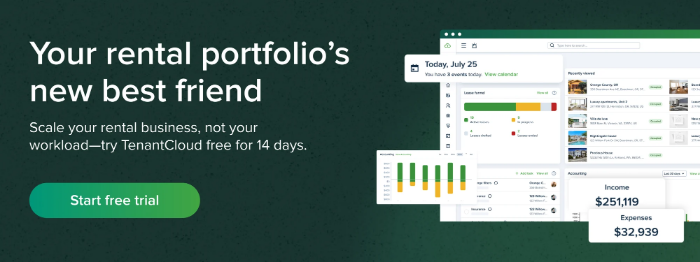Choosing the right tenant can make or break your rental experience.
A single bad decision might cost you thousands in unpaid rent, property damage, and legal fees (seriously, the UK average for loss of earnings and the eviction process is £30,000).
While credit checks and background reports provide valuable information about your tenant, they only tell part of the story. A rental verification form is an additional tool landlords use that fills the gaps by giving direct insight into how an applicant actually behaved as a tenant in the past.
According to recent industry surveys, over 70% of landlords have encountered fraudulent rental applications. Without properly verifying a tenant's previous rental behavior, you're essentially taking an applicant's word at face value.
This article will explore how to use a rental verification form effectively, what information it should include, and why it’s important in protecting your rental property.
TL;DR
A rental verification form is a critical tenant screening tool that confirms an applicant's rental history by contacting previous landlords. This document helps you verify payment history, property care, and lease compliance—preventing costly mistakes like late rent, property damage, or eviction proceedings.
What Is a Rental Verification Form?
A rental verification form is not a standard form itself, but a process you use to confirm a prospective tenant's rental history by contacting their previous landlords or property managers. In this process, a landlord typically gives a form to a tenant during the paperwork process that asks specific details about their previous rental history. The landlord will then do their due diligence in contacting the references themselves.
The form typically provides a landlord with the info they need to verify key information, such as a tenant's payment history, how well they maintained the property, if they were compliant with the terms in their lease, and their overall behavior.
Why Rental Verification Matters
While a credit report or background check are useful tools in determining an applicant's reliability, rental verification provides a firsthand testimony of their behavior from someone who has actually dealt with your applicant as a tenant.
There are several reasons you shouldn’t skip the rental verification process:
- Confirms Accuracy: Applicants sometimes misrepresent details or omit unfavorable information, so verification ensures you're working with facts rather than fiction.
- Reveals Behavioral Patterns: This type of verification shows specific behaviors, like if they consistently pay rent on time, maintain the property correctly, or if they've had any lease violations. Past patterns often help a landlord predict future behavior.
- Protects Your Investment: Taking the time to speak to other landlords helps you avoid tenants who might damage your property, pay rent late, or create disputes with other residents.
- Shows Red Flags: If a tenant claims to have a long-standing rental background but cannot list any landlords or references, this is a sign they could be hiding something.
A simple form + verification process gives you the details you need to make the right decision about your applicant, fair and square. And it only takes a few quick conversations to understand what you need.
A Note on Understanding Legal Requirements
Under the Fair Credit Reporting Act (FCRA), you're required to get written permission from the applicant before starting the tenant screening process, especially if you plan to run a credit check.
To ensure you're following the legal protocol, double check that the form you're using includes the applicant's full legal name, contact details, current and previous addresses, and written consent for verification.
What are the Keys to an Effective Rental Verification Form?
Understanding the elements you'll need in the form and in your verification process helps give you the right insight into a tenant's background. There are two major areas to focus on:
1. Tenant Information
You'll want to include these details in the tenant form:
- Full legal name and contact details
- Current and previous rental addresses
- Dates of residency at previous properties
- Written consent for verification
2. Questions for Previous Landlords
When you receive the form, you can then call the references to gather information. Here is a list of questions you might want to consider asking:
- Did the tenant pay rent on time? How many times were they late?
- Was the tenant ever more than 30 days late with any payment?
- Did the tenant properly maintain the property?
- Were there any lease violations or legal issues?
- Would you rent to this tenant again?
How to Complete the Verification Process
First time verifying a tenant's rental background? You can complete the process in a few easy steps.
Step 1: Collect the Application
Start with a comprehensive rental application that includes rental history and contact information for previous property managers or landlords. Ensure the applicant provides written consent.
Step 2: Review Initial Screening
Before reaching out to your applicant's past landlords, review the applicant's credit report and background check. If their reports raise immediate concerns, you may want to consider proceeding with the next available applicant. Make sure to send a notification that the applicant has been declined, to stay compliant with FCRA standards.
Step 3: Act On the Verification Form
Call the landlords if possible. If not, send a text or email. Email is not as good of an indicator, but is still worth looking into. The key is to ensure you're contacting legitimate landlords—not friends posing as references.
Step 4: Verify Contact Information
Cross-reference contact information by comparing phone numbers and addresses with property ownership records or online searches. This helps you spot fake references.
Step 5: Evaluate the Responses
Look for patterns rather than isolated incidents. A single late payment might be explainable, but multiple late payments or eviction attempts are serious red flags. Compare verification responses with your other screening results.
For first-time renters, rely more heavily on employment verification, income checks, and personal references.
What are the Red Flags to Watch For?
You may already have a list of rental criteria that you weigh in on when dealing with new applicants. However, what are the red flags you should specifically look for during the verification process?
Let's go over them in detail.
Missing or Unresponsive References
This could be a sign of irresponsibility or dishonesty. Like previously stated, if a previous landlord doesn't respond or the contact information is invalid, the applicant may be hiding something or providing fake references.
Consistent Late Payments
If the tenant's payment history shows frequent late payments or payments more than 30 days overdue, this is likely a pattern that will continue. If you don't feel good about it, you can move on to the next applicant.
Property Damage or Poor Maintenance
Previous landlords mentioning damage, cleanliness issues, or lack of maintenance indicate the applicant may not treat your property with respect. This could even mean the potential for an eviction down the road, which is something no property manager wants.
Lease Violations
Any serious lease violations like unauthorized pets, extra occupants, or violations of lease terms suggest the applicant won't follow your rental agreement. Skip.
Vague or Overly Positive References
If a reference seems too enthusiastic without specific examples or vague details, dig deeper with follow-up questions. (Are they actually who they say they are?)
Frequent Moving
A tenant who moves every few months might signal that they struggle with instability. You don't want to deal with a tenant who will break your lease contract or stop paying rent in an instant. If this shows up in a verification process, ask the applicant specific questions about their situation (without getting too personal).
How TenantCloud Simplifies Tenant Screening
Managing a tenant's verification manually can be time-consuming. TenantCloud streamlines the entire process with comprehensive tools designed specifically for landlords.
With TenantCloud's screening packages, you get access to credit checks, income verification, rental history, criminal background searches, and eviction history—all in one platform. Instead of juggling multiple forms and follow-up emails, you can manage everything from a single dashboard.
By automating verification tasks and centralizing your tenant data, TenantCloud gives you more time to focus on growing your rental business while ensuring you only place qualified, reliable tenants in your properties.
Conclusion
Rental verification is an essential component of smart property management. You'll sleep better knowing you've done your due diligence and selected tenants who will respect your property and honor their lease obligations.
Ready to streamline your tenant screening process?
TenantCloud offers comprehensive screening tools that make verification easy and efficient.
Start your free 14-day trial today and discover how the right platform can transform your rental business.
Frequently Asked Questions
What is a rental verification form used for?
A rental verification form confirms a prospective tenant's renting history by contacting their previous landlords. It helps you verify payment history, lease compliance, property maintenance, and overall tenant behavior.
Do landlords legally have to respond to rental verification requests?
Yes, under the FCRA, you're required to respond within 5-7 business days. Stick to factual information and only share details that the tenant authorized through written consent.
Can I verify rental history if the applicant has no previous landlords?
For first-time renters, request employment verification letters, pay stubs, bank statements, and personal references. You might also consider requiring a larger security deposit or co-signer.
What are the biggest red flags in a rental verification?
The most serious red flags include consistent late rent payments, multiple evictions, significant property damage, repeated lease violations, and unresponsive or invalid references.
How can I tell if a rental reference is fake?
Cross-reference contact information with property ownership records and conduct online searches. Call during business hours and ask specific, detailed questions that a real landlord would know.







